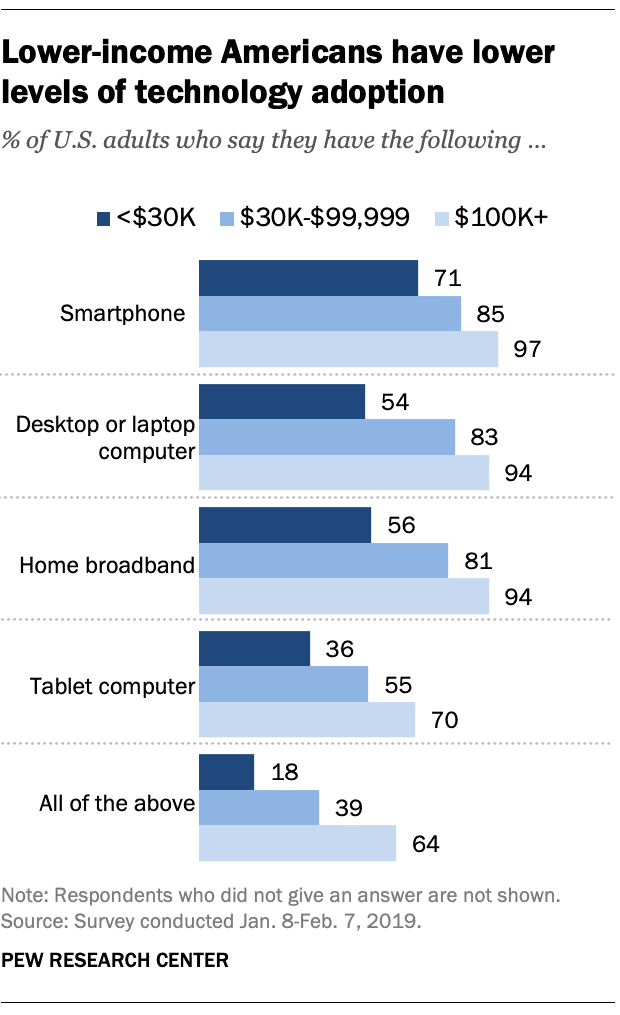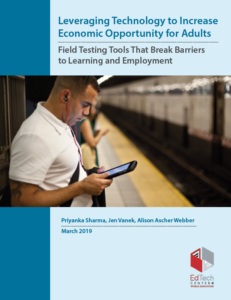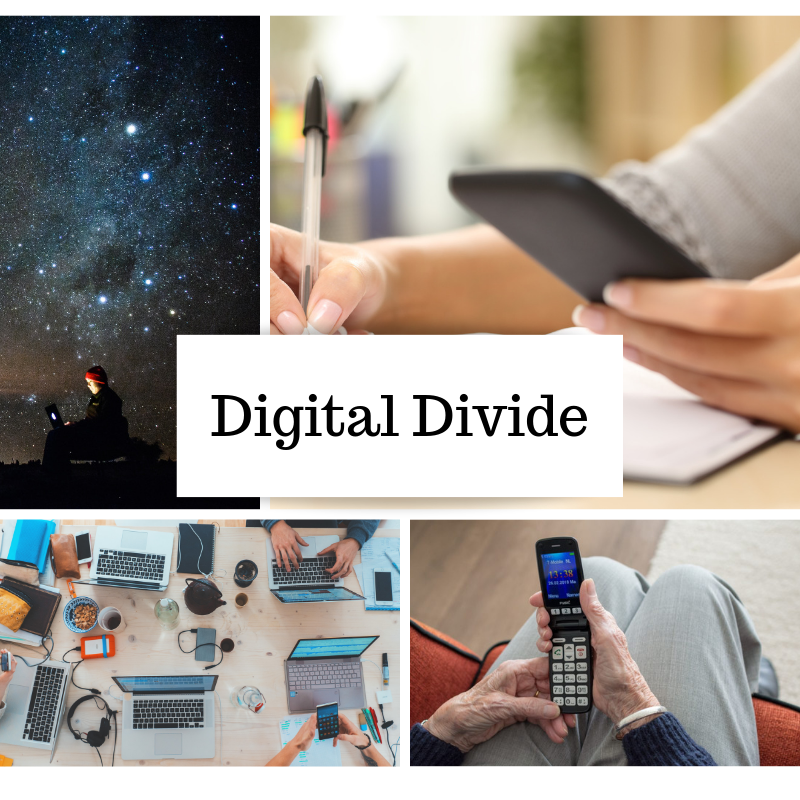By Jennifer Maddrell and Victoria Neff
Access to reliable and fast internet is vital in today’s modern, digital world. As described by the National Digital Inclusion Alliance, digital equity exists when everyone has the information technology needed for full participation in our society, democracy, and economy. This includes both internet access and internet-enabled devices.
Digital access and use reports from the Pew Research Center reveal the digital inequity faced by lower-income adults in the US. Pew’s Internet/Broadband Factsheet indicates 98% of adults making $75,000 or more per year use the internet.

However, internet use falls to only 81% for those with annual incomes below $30,000. While Pew’s Mobile Fact Sheet estimates that 95% of all US adults own a cellphone of some kind, a recent Pew blog post suggests that percentage drops to 71% of adults earning less than $30,000.The following considers this digital divide and opportunities to improve digital equity.
Lower-income smartphone owners rely on smartphone devices more than ever before.
Nearly 1 in 3 adults rely on their smartphones to go online. The graph on the right shows that, many lower-income adults in the US have fewer options for online access and rely more on their smartphones, including those tasks that have traditionally been used on larger screen devices. Research done by Pew in 2015 indicated that lower-income smartphone owners were especially likely to use their mobile device when seeking out and applying for jobs. This is a characteristic of the employment opportunity gap. Given this smartphone dependency, social enterprise and workforce development organizations are shifting their digital learning and outreach strategies to integrate mobile-friendly approaches. Some innovative examples in play to mitigate the employment opportunity gap include the following:
Workbay, an interactive career development platform, links recruitment, skill building, and career navigation into one comprehensive system, which is deliverable online or offline as a browser-based or mobile app. It provides students and job seekers with information and education, while directly connecting them to employers, career counselors, career pathways and real jobs.
Boston-based start-up and recent MassChallenge Finalist JobGet has developed a mobile app that enables hourly workers to search, apply and interview for jobs in real-time entirely on a mobile phone. “There is a large gap in this market,” Tony Liu, one of the co-founders explains, “although 60% of the workforce are hourly workers, majority of employment platforms focus solely on salaried workers, while leaving the hourly workers largely ignored. The recruitment process for hourly workers is still largely conducted through inefficient channels such as craigslist, paper applications, even help wanted signs. JobGet aims to help the 60% of the American workforce get a job instantly, in the fastest time possible. This platform is especially beneficial for individuals without access to a network of resources, sophisticated resume tools or a computer. Some candidates on the JobGet platform have been able to create their profile, apply to jobs, receive interviews and obtain a job offer all within 12 hours.”

Access and adoption is growing, but 29% of low-income adults still do not have access to a smartphone.
The affordability of mobile devices has improved over the years, thus increasing mobile penetration rates. Pew Research Center estimates that 95% of adults own a cellphone of some kind, including 92% of adults making less than $30,000.
In 2011, only 33% of lower-income adults owned a smartphone, now that number has doubled to 71%. Based on current US Census data, approximately 73 million adults do not have access to a smartphone.

Recognizing this gap, educational technology initiatives by organizations such as Cell-Ed, Skillsmart, and Signal Vine use texting to meet most adult learners, including those who don’t have access to smartphones. Texting is a powerful tool to encourage adults with lower skills toward action or opportunity — whether that’s taking time to study, attending a hiring event, or submitting a job application.
A recent report by the EdTech Center at World Education offers more insight on the impact of these 3 promising from field testing of seven technologies with over 1,500 learner-workers.
Jennifer Maddrell is the Founder and Executive Director of Designers for Learning, a nonprofit that combines service learning with instructional design support to address underserved social needs. Over 4,000 people have enrolled in their 100% virtual service projects to learn about adult basic education needs and to help build a repository of free lesson plans and OER for adult educators and their students that are aligned to the College and Career Readiness Standards (see our Adult Learning Zone on OER Commons). To learn more and get involved, visit their website: https://designersforlearning.org.





1 Comment.
I am very much enthusiastic in the field of ICT in Education. Different publication of EduTech will help me to enrich my knowledge.
Thank you EduTech.
Kind regards,
Bijan